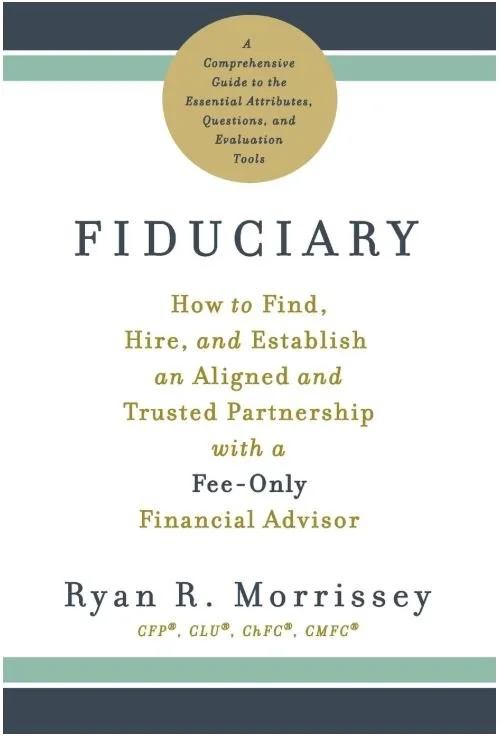The 3 Types of Financial Advisors
When it comes to managing your money, working with a financial advisor can be a game-changer. But not all advisors are the same.
Financial advisors come in many shapes and sizes, and the way they’re compensated can have a big impact on the kind of service you get and the potential conflicts of interest that may arise.
Today, we’re going to explore the three main types of financial advisors, what sets them apart, and how to make sure you’re getting the best advice for your situation.
1. The Broker
The first type of financial advisor is the broker. Brokers can be stockbrokers or insurance brokers, and their main role is to execute transactions for clients, such as buying and selling stocks, bonds, or insurance products. They’re often compensated on a commission basis, meaning they earn money each time a transaction occurs.
While some argue that brokers aren’t financial advisors, they play a significant role in certain transactions.
However, brokers come with a key drawback: conflicts of interest. Since brokers are paid based on transactions, they are incentivized to push for more trades, which may not always align with your best interests. Furthermore, many brokers are tied to large firms, meaning their primary duty is to the company rather than to you, the client.
Brokers can also receive perks like free trips or bonuses for pushing certain products—this can create another conflict, as their motivation to recommend certain products may not be in your best interest.
If you’re looking for advice or long-term financial planning, brokers are generally not the best option. But if you simply need to make a transaction, they may be able to help.
2. The Fee-Based Advisor
Next up is the fee-based advisor, who blends the roles of a broker and a registered investment advisor. These professionals are licensed as both brokers and registered investment advisors (RIAs). Registered investment advisors work on a fee-based model, meaning they charge a fee for the services they provide, such as financial planning or investment advice. However, fee-based advisors can still receive commissions for selling certain products, which introduces a potential conflict of interest.
While the fee-based model is an improvement over the commission-based broker model, it’s important to understand that these advisors may still have a financial incentive to recommend certain products or services that benefit them or their firm. The key difference is that they can also charge fees for ongoing services, such as portfolio management. However, their dual roles (broker and advisor) may create confusion, and it can be hard to tell when they’re acting in the best interest of the client versus when they’re simply fulfilling their obligations to their employer.
3. The Fee-Only Advisor
If you’re looking for an advisor who’s free from conflicts of interest, then the fee-only advisor is probably your best bet. These professionals are compensated solely through fees paid by the client—either an hourly fee, a flat fee, or a percentage of assets under management (AUM).
They do not sell products for commissions, nor do they receive kickbacks or bonuses for recommending certain investments.
Fee-only advisors are often seen as the most ethical option because they’re legally required to act in your best interest. This is known as a fiduciary duty—a legal obligation to prioritize your needs above their own.
With a fee-only advisor, there’s no incentive to steer you toward a product just to make a commission or earn a perk. They’re focused on helping you achieve your financial goals, and their compensation is transparent and tied directly to the services they provide.
Fee-only advisors typically work in one of three ways:
Hourly Fees: You pay for the advisor’s time on an hourly basis. This is a good option if you just need specific advice or help with a financial plan and don’t need ongoing investment management.
Flat Fees: For specific projects or services, such as creating a comprehensive financial plan. This can be a great option if you need advice but are capable of implementing the plan on your own.
Assets Under Management (AUM): A percentage of the assets the advisor manages for you. This is the most common fee structure for full-service financial planning, where the advisor handles both financial planning and investment management. Typically, this is around 1% of the assets under management, though the percentage may be lower for larger portfolios.
Why Fee-Only Advisors are the Best Choice
When working with a fee-only advisor, you’re reducing the potential for conflicts of interest. Because their compensation is tied to your relationship with them—rather than transactions or commissions—they’re incentivized to work in your best interest. They also have a legal duty to disclose any conflicts of interest and put your financial goals first.
However, even within the fee-only category, there are differences. Some advisors focus on specific aspects of financial planning, while others may offer comprehensive services that include both financial planning and investment management. Understanding what each advisor offers and how they charge is key to finding the right fit for you.
Navigating Your Choices
When choosing a financial advisor, it’s essential to understand how they work and how they’re compensated.
Are they a broker who charges commissions?
A fee-based advisor who may still have some conflicts of interest?
Or a fee-only advisor who charges a transparent fee with no hidden incentives?
The fee-only model, particularly when it comes with a fiduciary duty, is generally the best choice for those who want to reduce potential conflicts of interest. But even within that model, the services provided and the way they charge can vary. Some advisors may only offer financial planning, while others provide investment management as well.
It’s important to ask questions when interviewing advisors. Understand their compensation structure, their services, and how they manage conflicts of interest. This will give you peace of mind knowing that your financial goals are being handled by someone who truly has your best interests in mind.
Looking Ahead
In the next post, we’ll dive deeper into how to find and interview fee-only financial advisors. We’ll also explore the differences between various fee structures and help you choose the right advisor for your financial needs. Whether you’re just starting out or planning for retirement, the right financial advisor can make all the difference in helping you achieve your financial goals.
If you have a question or topic that you’d like to have considered for a future episode/blog post, you can request it by going to www.retirewithryan.com and clicking on ask a question.
As always, have a great day, a better week, and I look forward to talking with you on the next blog post, podcast, YouTube video, or wherever we have the pleasure of connecting!
Written by Ryan Morrissey
Founder & CEO of Morrissey Wealth Management
Host of the Retire with Ryan Podcast





